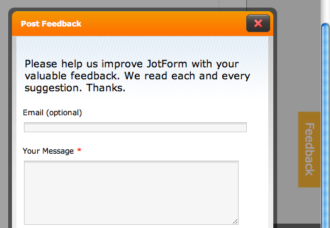Top 360-degree feedback questions
- Does the employee know how to effectively prioritize tasks?
- Does the employee inspire others?
- How does the employee provide positive feedback to their direct reports?
- What would you say are the employee’s greatest strengths?
- How well does the employee handle constructive criticism and feedback?
- How does the employee handle conflicts or disagreements with colleagues?
- How proactive is the employee in identifying and solving problems?
- What are the employee’s strengths and areas for improvement?
- How does the employee support the development and growth of their peers?
Performance reviews are a great opportunity for managers to share helpful feedback with an employee and support their career growth. The 360-degree approach to gathering feedback is useful because it provides a more comprehensive view of an employee’s performance than traditional performance reviews.
In this article, we’ll share some effective 360-degree feedback questions and best practices for using them in a review. But first, let’s take a look at the 360-degree review in more detail and the reasons many organizations prefer it.
What are 360-degree feedback questions?
A 360-degree review is structured differently than a traditional performance review. In a standard review, feedback moves downhill from manager to employee.
With a 360-degree performance review, the structure is broader — the organization gathers feedback (typically anonymous feedback) about the employee’s performance from many different people who work with them, including direct reports, business leaders, peers, and sometimes even customers and partners.
Organizations gather these assessments using a survey with 360-degree feedback questions. Questions can cover similar areas to traditional performance reviews, including productivity, time management, collaboration skills, strengths, and areas for improvement.
Why 360-degree feedback questions are important
The idea behind 360-degree feedback questions is to give the employee a more holistic evaluation based on their interactions with people in many areas of the organization — not just their manager.
These reviews are most often used for those in leadership positions, though they can be used for employees at other levels as well.
Pro Tip
In evaluating feedback from 360-degree questions, focus more on broad themes from responses than specific comments. The details of particular relationships and interactions can vary, but consistent trends in how people describe working with an employee, whether positive or negative, are worth paying attention to.
Who can benefit from 360-degree feedback questions?
One of the major benefits of a 360-degree feedback review is that it provides a more comprehensive review of an employee’s performance. The number of evaluations an employee receives and the variety of perspectives represented provide information they wouldn’t have access to otherwise.
Most employees never hear feedback about their work from their peers, even though how employees feel about working together is essential to an organization’s success and the development of career skills.
This information can offer employees a fresh outlook on their performance. Without a 360-degree review, the employee may miss out on important feedback regarding their interpersonal skills or how their team views them, limiting their opportunities for growth.
Organizations also benefit from 360-degree feedback questions. Gathering broad input from multiple sources can highlight problems that might have gone unnoticed otherwise or point to strengths and leadership potential that a company might have missed out on.
What kind of data can you collect from 360-degree feedback questions?
Companies can use the 360-degree method to collect data on employees’ communication skills, time management, ability to collaborate, productivity, and much more. You can also gather insights into their leadership potential, adaptability, and conflict resolution skills.
To ensure your respondents are as forthright as possible, collect as little data about the individual answering the questionnaire as you can. When employees know a survey is anonymous, they’re far more likely to give honest answers.
You may want to collect slightly more specific information, such as what department the evaluating employee is from or whether they’re a “peer/colleague” or “manager/leader.” However, in smaller organizations, even those identifiers may be giveaways as to who filled out the survey, so tailor your data collection on a case-by-case basis.
How can you write a good 360-degree feedback question?
To ensure your 360-degree feedback questions effectively gather insight about the employee, keep these tips in mind:
- Identify the main goals of the survey. Feedback surveys can cover a lot of ground — communication, problem solving, time management, and more — but it’s better to focus on exactly what you want to know when crafting the questions. Do you want to evaluate the employee’s leadership style, for example, or learn more about specific tactical skills? Figure out what you want to accomplish with the 360-degree review and design the questions accordingly.
- Start with closed-ended questions. Closed-ended questions, like multiple-choice and rating scales, require survey respondents to choose their answers from a predetermined set of options. They offer quantitative data that can help you obtain a broad overview of employee performance.
- Expand with open-ended questions. These types of questions don’t have a predetermined set of answers like closed-ended ones do. Instead, they require the respondents to write their own answers. They’re an excellent way to get qualitative feedback, especially for soft skills. Use them in your survey to get more nuanced insights into employee performance.
- Separate the questions by topic. Depending on what areas of performance you want to cover, organize the questions so respondents can go topic by topic. For example, group questions about the employee’s communication style together. This can help you gather more thoughtful, in-depth feedback.
- Always opt for clarity. Ensure each question is easy to understand at a glance. It’s important to avoid confusing questions that may leave respondents unsure about the intention or meaning of the question.
- Ensure anonymity. Some survey respondents, especially direct reports of an employee, may be hesitant to provide honest feedback for fear of repercussions. Assure participants that their responses will be anonymous and that the employee in question won’t know which employees provided specific answers.
- Use an intuitive survey builder. Select a survey software solution that makes it easy to create the 360-degree questionnaire. Many platforms, like Jotform, come with templates you can edit to suit your needs. Ensure that the software offers an option, like Jotform Report Builder, for gathering and analyzing the survey responses as well.
- Carefully choose the respondents. Select 360-degree survey respondents based on their professional relationship with the employee in question. Ensure you receive feedback from multiple representatives from different groups of people, such as peers, customers, managers, and direct reports.
- Conduct the survey well in advance of the scheduled review. Be sure to give your respondents plenty of time to carefully consider their answers. You’ll also need time to analyze all the survey responses so you can present the insights to the employee during their performance review.
- Strategically select feedback to present to the employee. You can collect a lot of feedback from the 360-degree questionnaire, some of which might not be constructive or helpful. Be sure to go through the responses in detail and determine which insights to share with the employee to align with the goals of the performance review.
Create a 360-degree feedback survey preloaded with these 30 questions.
Which format to use: Closed-ended vs open-ended feedback questions
Should you ask closed-ended questions, with answer options provided, or open-ended questions, where respondents write their own answers? You’ll get the best results if you use a mix of the two formats for your 360-degree feedback questions. Here are some examples for you to consider.
Closed-ended questions
Closed-ended questions have predefined answers. Examples of these questions include rating scales, multiple-choice, and yes/no.
- Rate the employee’s ability to meet deadlines.
- Does the employee know how to effectively prioritize tasks?
- Do you feel respected when you work with the employee?
- Does the employee know how to receive and incorporate negative/constructive feedback?
- Does the employee effectively handle difficult situations with direct reports?
- Rate how well the employee communicates with team members.
- Does the employee inspire others?
- Does the employee have an attitude toward learning that aligns with our organization’s goals?
- How often does the employee give positive feedback to peers?
- Does the employee show initiative on a daily basis?
Open-ended questions
Open-ended questions require the respondent to write out their answer in their own words. This provides an opportunity for more specific, detailed feedback.
- Share an example of a time when the employee effectively handled a difficult situation with a customer.
- How does the employee provide positive feedback to their direct reports?
- Share an example of how the employee motivates their team during difficult periods.
- What would you say are the employee’s greatest strengths?
- Which areas could the employee improve?
- What skills can the employee develop to be a better teammate?
- How can the employee be a better leader?
- If you were the employee, what would be your first order of business?
- What does working with the employee feel like?
- What five words would you use to describe the employee?
Which questions to ask and when to ask them: 360-degree feedback question examples
Here are some examples of questions you can ask team members on a 360-performance review, including a breakdown of why, when, and how to ask each question.
- How effectively does the employee communicate with team members across different departments?
Purpose: Assess the employee’s cross-functional collaboration and communication.
When to ask: Ask this when you’re evaluating your employee’s interpersonal skills or their ability to work in a team.
How to ask: Use a closed-ended rating-scale question or an open-ended short-answer format.
- How well does the employee handle constructive criticism and feedback?
Purpose: Assess the employee’s openness to growth and their ability to handle feedback professionally.
When to ask: Ask this when you want to know how the employee approaches or feels about self-improvement.
How to ask: Use a rating scale with answer options ranging from “Very well” to “Not well” and add a short-answer field for elaboration.
- Can you provide an example of how the employee demonstrated leadership in a challenging situation?
Purpose: Identify the employee’s leadership potential and ability to handle pressure.
When to ask: Ask this when an employee is being considered for a promotion.
How to ask: Use an open-ended question format.
- How consistently does the employee meet deadlines and deliver quality work?
Purpose: Evaluate time management skills and reliability.
When to ask: Ask this when workload has increased.
How to ask: Use a rating scale with options ranging from “Always” to “Rarely.”
- In what ways does the employee contribute to a positive work environment?
Purpose: Measure the employee’s impact on team morale and overall workplace culture.
When to ask: Ask this when the workplace environment is facing challenges or when evaluating the work environment more broadly.
How to ask: Use an open-ended short-answer question format.
- How effectively does the employee adapt to changes in the workplace or in their role?
Purpose: Assess the employee’s flexibility and ability to navigate change and ambiguity.
When to ask: Ask this when big changes are on the way or have recently been introduced.
How to ask: Use a rating scale with options ranging from “Very effectively” to “Not effectively.”
- How does the employee handle conflicts or disagreements with colleagues?
Purpose: Gather insight into the employee’s conflict resolution skills and professionalism.
When to ask: Ask this when the employee is in line for a management position or if conflicts have recently cropped up.
How to ask: Use a longer, open-ended question format to gather nuanced answers on a sensitive topic.
- How proactive is the employee in identifying and solving problems?
Purpose: Evaluate the employee’s initiative and ability to think both creatively and critically.
When to ask: Ask this before or after the team tackles a large, complex project.
How to ask: Use a rating scale with options ranging from “Very” to “Not at all.”
- How does the employee support the development and growth of their peers?
Purpose: Gauge the employee’s teamwork and mentoring skills.
When to ask: Ask this when you’re evaluating someone for an educational or team leader position.
How to ask: Use a longer, open-ended question format to gather nuanced answers.
- What are the employee’s strengths and areas for improvement?
Purpose: Gain a balanced view of both positive attributes and growth opportunities.
When to ask: Pose this question in regular evaluations to establish a baseline for growth.
How to ask: Use an open-ended question format.
How to ask 360-degree feedback questions with Jotform
Choosing the right software can make designing, sending, and analyzing a 360-degree feedback survey simple.
Jotform is a powerful online survey-building platform that makes it easy to create and conduct 360-degree feedback surveys.
Like all Jotform templates, the 360-degree feedback survey template is fully customizable. Just use the intuitive drag-and-drop Form Builder to edit survey fields, add new question types, modify the design, add helpful integrations, and more. Quickly distribute the survey when it’s ready — you can share it via email, link, website embed, or QR code.
You can easily create a survey from scratch too.
How to analyze 360-degree feedback questions with Jotform
Along with easily creating surveys, Jotform helps you analyze survey responses as well. A range of tools can help you manage your survey data:
- Sort survey responses in a helpful database format with Jotform Tables.
- Create real-time, visual reports that help you find trends in 360-degree feedback question responses with Jotform Report Builder.
- Use Jotform Workflows to create automated workflows that include reminders and notifications to keep the review process moving.
- Gather performance review signatures with Jotform Sign.
How to conduct 360-degree feedback surveys: A few final tips
Best practices for an effective 360-degree feedback process
Here are a few quick tips to remember when you deploy your 360-degree feedback surveys:
- Safeguard anonymity for honest feedback. Keep respondents’ identities confidential to encourage open and honest feedback, without fear of repercussions.
- Include diverse feedback sources. Collect feedback from a mix of colleagues, supervisors, and direct reports to provide a balanced perspective on the employee’s performance.
- Ask clear, specific questions. Use straightforward language and avoid ambiguity in your questions and obtain relevant, actionable feedback.
- Provide instructions for participants. Offer guidelines on how to give constructive feedback to keep comments respectful, specific, and useful.
- Follow up with a development plan. Use feedback to create an actionable development plan for the employee. Focus on boosting strengths and addressing areas for growth.
Things to avoid when conducting 360-degree feedback surveys
When designing your feedback questions, avoid asking vague or overly broad questions, such as, “Do you think this person is a good employee?” or “Would you hire them again?” These lead to unclear and nonspecific feedback.
Don’t use the feedback process to criticize or single out employees. The point of feedback is to allow your employees room for improvement and growth. Focus on constructive and balanced input.
Lastly, don’t forget to follow up. If you don’t discuss the results of your survey with the employee and springboard the feedback into an action plan, you’ll waste an important opportunity for growth. This could discourage future participation.
How Jotform can help you gather all kinds of employee feedback
Just as 360-degree feedback reviews offer a comprehensive look at an employee’s performance, Jotform offers a comprehensive suite of survey solutions. We also have other survey templates for employees — including employee satisfaction surveys and self-assessment surveys.
Photo by Campaign Creators on Unsplash




















Send Comment: